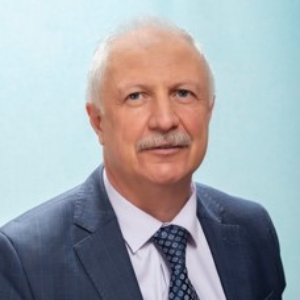Title : Volkmann’s fragment osteosynthesis in unstable malleoli fractures
Abstract:
Malleoli fracture is the most common injury of lower extremity. Approximately 40% of these injuries are associated with comminuted or non-comminuted Volkmann fragment fracture. Outcomes of treatment of such fractures are worse in comparison with malleoli fracture without damage to Volkmann’s tringle. Not so long ago it was considered that the size of Volkmann’s fragment no less than 1/3 of articular surface was the indication to its fixation. Nowadays a number of authors use closed reduction and different variants of internal fixation, including front to back applied screws, to treat the trauma described above. However, almost in all cases Volkmann’s fragment demands more precise anatomical reduction and internal fixation using lag screws applied from back to front.
Aim of the presentation: To validate viability of posterolateral and posteromedial surgical approaches in unstable malleoli fractures associated with Volkmann’s fragment fracture.
Our treatment approach of such patients includes meticulous preoperative planning based on CT images of ankle joint which allow to determine fracture pattern and size of Volkmann’s fragment. AO classification was used for malleoli fractures. Fractures of the Volkmann’s fragment were classified according to Haraguchi classification (2006). In accordance with this classification, we fix Volkmann’s fragment as well as malleoli in case of fracture of posterolateral Volkmann’s fragment (Haraguchi 1) and transverse fracture with extension of fracture line onto medial malleoli (Haraguchi 2). Axial CT images provided information about the configuration of posterior edge of distal tibia, which was classified according to Bartoni?ek et al. (2015), who differ 4 types of fractures of posterior edge of tibia.
Type 1: extraincisural fragment with an intact fibular notch.
Type 2: posterolateral fragment involving 1/3-1/4 of the fibular notch.
Type 3: posteromedial two-part fragment involving posterior parts of the fibular notch and medial malleolus.
Type 4: large posterolateral triangular fragment involving up to 50% of the fibular notch according to axial “subchondral” CT image.
Either posteromedial or posterolateral approach was chosen based on the determined fracture type. ORIF using back to front screws was performed. Results of described treatment method using posterolateral or posteromedial surgical approach are presented and indications are determined. Surgical technique of posterolateral and posteromedial approaches and possible reduction methods were demonstrated. Stage treatment results of more than 40 patients with 1 year follow-up are presented. Functional results were evaluated according to AOFAS scale (83,2±13,4 at 1 year) and Neer scale (87,8±16,8 at 1 year).
Conclusion: suggested tactics of diagnostics and osteosynthesis of Volkmann’s fragment in unstable malleoli fractures provide good outcomes and can be employed in clinical practice.




